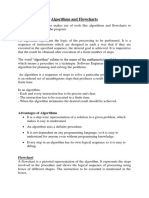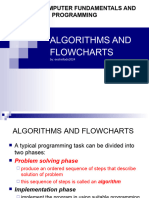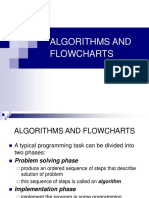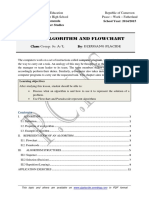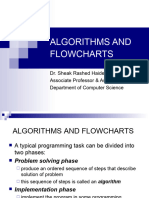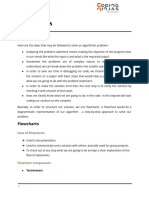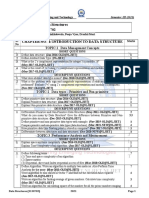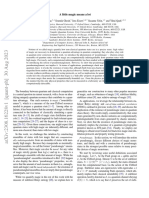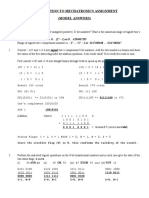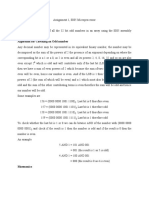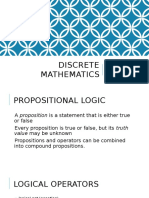0% found this document useful (0 votes)
47 views3 pages02 Algorithms and Flow Charts
The document explains algorithms as step-by-step procedures for problem-solving, categorized into six fundamental types such as recursive and dynamic programming algorithms. It also describes flowcharts as graphical representations of algorithms using standard symbols to illustrate processes. Examples of algorithms and their corresponding flowcharts are provided for tasks like printing numbers, converting temperatures, and determining student grades.
Uploaded by
muherezachris3Copyright
© © All Rights Reserved
We take content rights seriously. If you suspect this is your content, claim it here.
Available Formats
Download as PDF, TXT or read online on Scribd
0% found this document useful (0 votes)
47 views3 pages02 Algorithms and Flow Charts
The document explains algorithms as step-by-step procedures for problem-solving, categorized into six fundamental types such as recursive and dynamic programming algorithms. It also describes flowcharts as graphical representations of algorithms using standard symbols to illustrate processes. Examples of algorithms and their corresponding flowcharts are provided for tasks like printing numbers, converting temperatures, and determining student grades.
Uploaded by
muherezachris3Copyright
© © All Rights Reserved
We take content rights seriously. If you suspect this is your content, claim it here.
Available Formats
Download as PDF, TXT or read online on Scribd
/ 3





